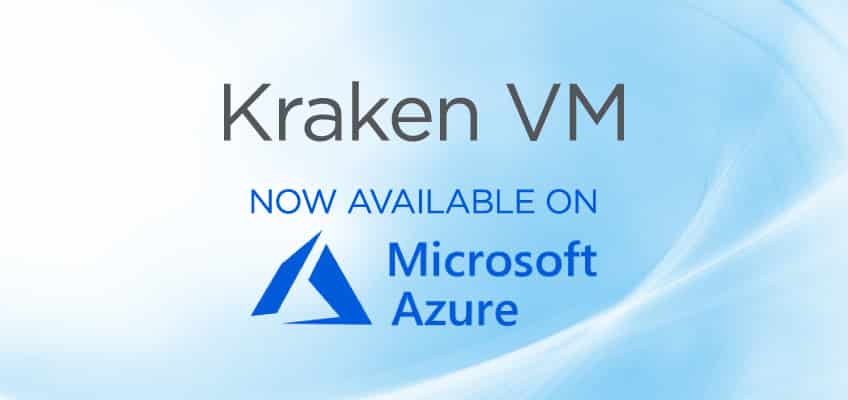The latest release of Haivision’s powerful and versatile transcoder, Kraken 3.3, is now available as a Virtual Machine (VM) on Microsoft Azure. I spoke with John Lawrence, Kraken Product Owner at Haivision to understand what this means and who can benefit. But first, for those unfamiliar with it, here’s a quick primer on the Kraken video encoder and transcoder.
High-Performance Video Transcoding for ISR Communications
Kraken is often used for deployment within a ground control station, receiving encoded video streams from a variety of sources such as airborne platforms, ground vehicles or maritime platforms. In these stations, Kraken can further compress video for transmission over satellite or other disadvantaged links. The Kraken is also often used to “flip” codecs, for example from H.265/HEVC to H.264/AVC for distribution to edge sites where there are legacy systems that cannot accept H.265 streams. Suitable for any deployment, the Kraken is available as a server, in a compact form factor, or for deployment in a virtual machine (VM).
John explains, “Where Kraken really shines for ISR communications, is its ability to optimize video streaming over constrained networks and maximize the number of streams processed simultaneously. Kraken can produce very high-quality video at low bitrates that aids situational awareness in remote and bandwidth-constrained locations.”
Now Available on Microsoft Azure
Kraken 3.3 is now available in the Microsoft Azure Marketplace and uses Microsoft’s global network of cloud regions and the public internet to distribute high-quality and encrypted full-motion video to multiple destinations. Kraken is available to take advantage of Azure with NVIDIA GPUS which allows for transcoding a higher number of streams compared to using CPU. For a high number of transcodes, this can be a more cost-effective approach compared to CPU.
Kraken VM Expands Potential Applications
Adding the Azure capability opens up many new use cases that the Kraken can now easily support. Organizations in the defense, public safety, disaster relief, and energy industries can now reliably transport low latency video over the internet from remote and bandwidth-constrained locations.
For example, the oil and gas industry has very similar operations to ISR surveillance missions carried out by defense organizations. These companies are typically monitoring critical infrastructure such as offshore oil rigs, pipelines, and refineries using drones or fixed cameras on a tower for example and they need to transport this video over wireless links. The primary difference from defense operations is that these are non-classified operations involving non-sensitive information which means it’s possible to use the public internet as a means of transport. Having a transcoding and stream routing solution in the cloud is something these organizations can now easily leverage to gather fast and reliable intelligence to make critical decisions.
RTMP Stream Routing
Additionally, Kraken 3.3 allows the transcoding process to be bypassed, and instead, it redirects live RTMP streams and flips them to the Secure Reliable Transport (SRT) protocol for distribution to the cloud. Designed for overcoming the fluctuating conditions of IP networks, most notably the internet, SRT can securely and reliably deliver any kind of content from anywhere to anywhere. SRT brings together 128/256 bit AES encryption, packet loss recovery, and jitter prevention to preserve the integrity and quality of video streams.


